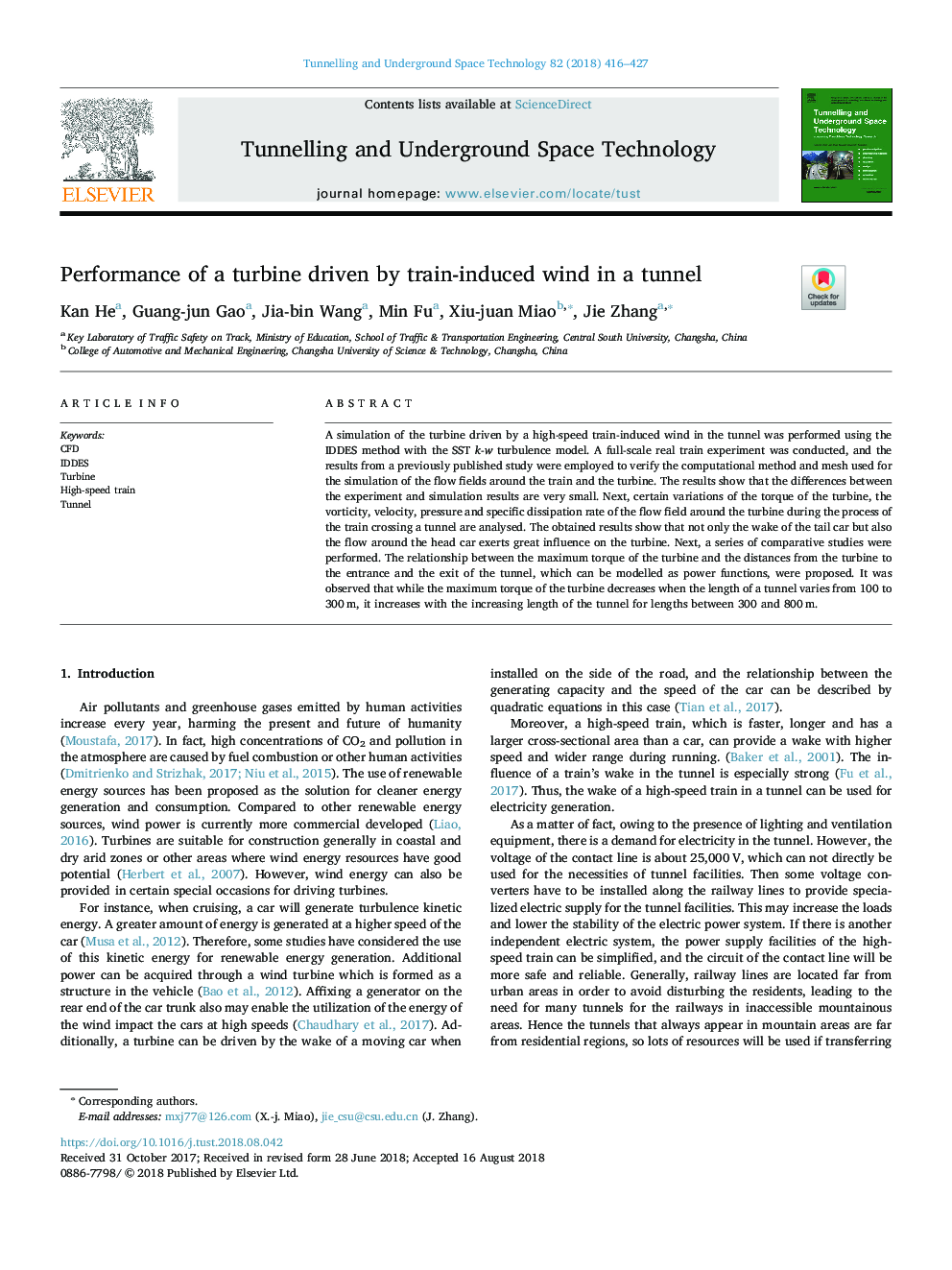| Article ID | Journal | Published Year | Pages | File Type |
|---|---|---|---|---|
| 11001369 | Tunnelling and Underground Space Technology | 2018 | 12 Pages |
Abstract
A simulation of the turbine driven by a high-speed train-induced wind in the tunnel was performed using the IDDES method with the SST k-w turbulence model. A full-scale real train experiment was conducted, and the results from a previously published study were employed to verify the computational method and mesh used for the simulation of the flow fields around the train and the turbine. The results show that the differences between the experiment and simulation results are very small. Next, certain variations of the torque of the turbine, the vorticity, velocity, pressure and specific dissipation rate of the flow field around the turbine during the process of the train crossing a tunnel are analysed. The obtained results show that not only the wake of the tail car but also the flow around the head car exerts great influence on the turbine. Next, a series of comparative studies were performed. The relationship between the maximum torque of the turbine and the distances from the turbine to the entrance and the exit of the tunnel, which can be modelled as power functions, were proposed. It was observed that while the maximum torque of the turbine decreases when the length of a tunnel varies from 100 to 300â¯m, it increases with the increasing length of the tunnel for lengths between 300 and 800â¯m.
Related Topics
Physical Sciences and Engineering
Earth and Planetary Sciences
Geotechnical Engineering and Engineering Geology
Authors
Kan He, Guang-jun Gao, Jia-bin Wang, Min Fu, Xiu-juan Miao, Jie Zhang,
